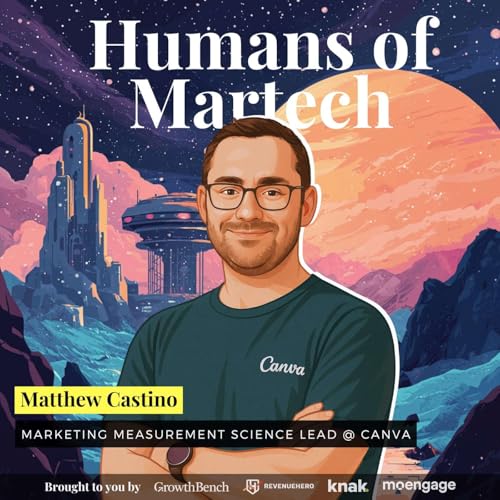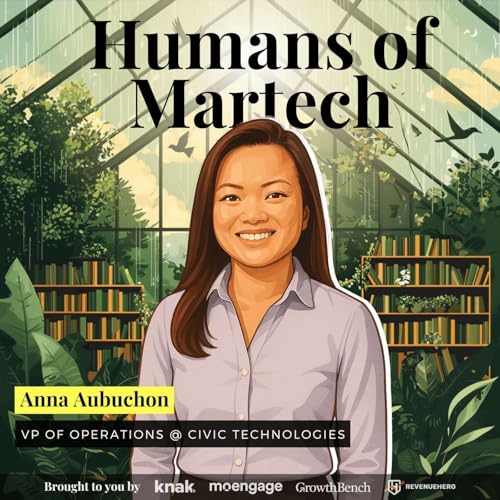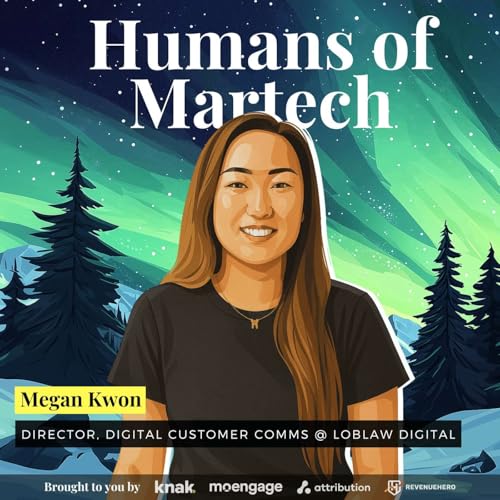What’s up everyone today we have the pleasure of chatting with Blair Bendel, Senior Vice President of Marketing at Foxwoods Resort Casino.(00:00) - Intro (00:49) - In This Episode (03:39) - Evolution of Casino Martech (06:11) - Customer Loyalty & Personalization (09:36) - Using the Right Marketing Channel for the Right Goal in Hospitality (12:38) - Foxwood’s Martech and Customer Data Migration to MoEngage (15:05) - Picking MoEngage (20:07) - Why Change Tools?? (22:46) - Implementing a New Platform (24:58) - Building Structure for 24/7/365 Casino Marketing (31:20) - Key Things to Track (33:15) - Fail Fast, Learn Faster (37:25) - Balancing Big Data with Privacy (40:23) - Why AI Will Not Fix Casino Marketing Overnight (43:23) - Exploring AI (46:59) - Human Experience Drives Long-Term Casino Revenue (49:05) - Human Side (52:12) - Why Face-to-Face Conversations Strengthen Marketing TeamsSummary: The casino floor never sleeps. Lights hum, cards shuffle, and people come not just to gamble but to feel alive. While other industries went digital overnight, casinos stayed grounded in human moments, and Blair’s mission has been to connect those experiences through smarter tech. At Foxwoods, he replaced a maze of disconnected martech with a single platform, giving his team one clear view of every guest. Push messages became quick nudges, emails carried depth, and silence built trust. In a business that runs 24/7/365, his team moves fast, learns constantly, and protects what matters most: guest privacy. About BlairBlair Bendel has spent nearly two decades shaping brands that make casinos feel alive. As SVP of Marketing at Foxwoods Resort Casino, one of the world’s largest gaming and entertainment destinations, he leads strategy across brand, digital, loyalty, and guest experience for a property owned by the Mashantucket Pequot Tribal Nation.Before Foxwoods, Blair drove marketing for Boyd Gaming and Pinnacle Entertainment, guiding multi-property teams through high-stakes launches and rebrands. Known for blending data and instinct, he’s built campaigns that turn foot traffic into fandom and moments into measurable growth.The Evolution of Casino MartechCasinos thrive on the energy of real people in real spaces. Blair has spent his career in that environment, where the hum of slot machines and the rhythm of foot traffic define success. He points out that while other industries rushed to digitize, gaming and hospitality focused on the on-property experience that drives most of their revenue. Technology in this world serves the guest standing in front of you, not a distant audience online.“There’s a lot of innovation, but it’s all centered around that customer and that on-property experience,” Blair said.Walk across a modern casino floor and you see how far that innovation has gone. Slot machines now reach twelve feet high, lit by curved screens that feel more like immersive art installations than games. Even bingo, once a paper-and-pen ritual, lives on tablets. These changes reflect more than aesthetic upgrades. They mark the blending of digital personalization with in-person entertainment. Each new machine and experience collects data, interprets patterns, and helps casinos understand what keeps players coming back.Blair sees the next phase of progress in the pairing of martech systems and artificial intelligence. Casinos have long collected data on player habits, but much of it stayed locked in isolated databases. AI now connects those dots, linking preferences, visit frequency, and loyalty activity into one living profile. That way you can predict what a guest wants before they ask for it. Personalized dining offers, targeted game promotions, or well-timed follow-up messages all become part of a continuous loop that strengthens engagement.Still, Blair focuses on the human side of this transformation. “People assume tech makes everything easier, and it doesn’t,” he said. Each new platform requires training, integration, and trust. Martech without people who know how to use it becomes clutter. Blair spends much of his time ensuring his team understands the technology deeply enough to keep the guest experience effortless. The strategy depends on teams who can think like data analysts and act like hosts.Key takeaway: Martech and AI can elevate on-property hospitality when used to deepen human connection instead of replacing it. Integrate systems that unify guest data, but prioritize training and comfort among your team. When your people trust the tools and your guests feel known, technology quietly fades into the background while loyalty takes center stage.Customer Loyalty and Personalization in Casino MarketingCasino marketing has operated on autopilot for too long. Guests still get dropped into massive segmentation buckets, treated as if their weekend habits, entertainment tastes, and spending patterns are interchangeable. Blair describes it bluntly: “We still send show offers to guests who’...
Más
Menos
 56 m
56 m Dec 9 20251 h
Dec 9 20251 h 49 m
49 m Nov 25 202556 m
Nov 25 202556 m 55 m
55 m Nov 11 202555 m
Nov 11 202555 m Nov 4 202553 m
Nov 4 202553 m 1 h y 3 m
1 h y 3 m
